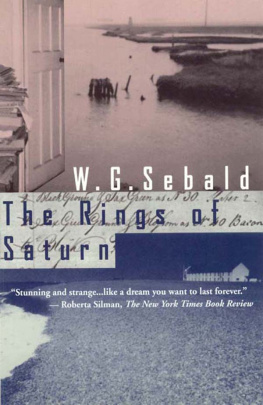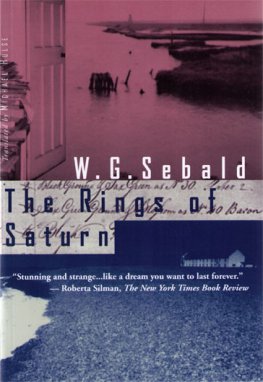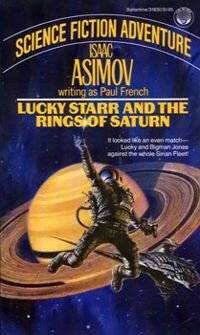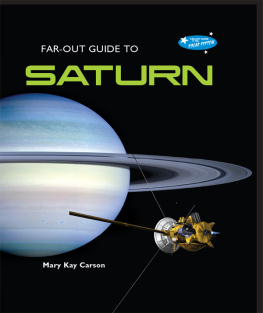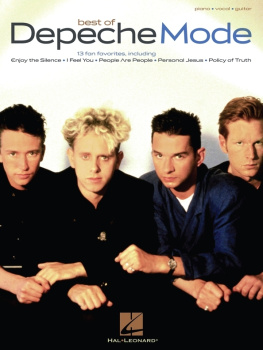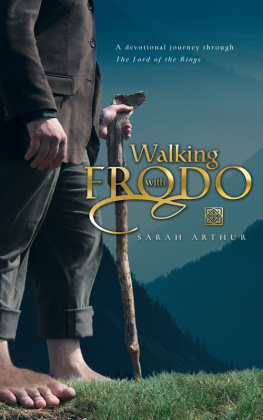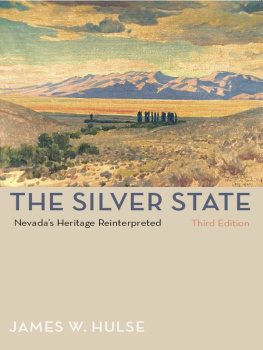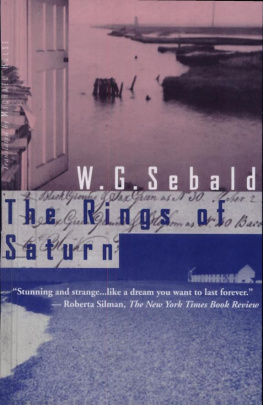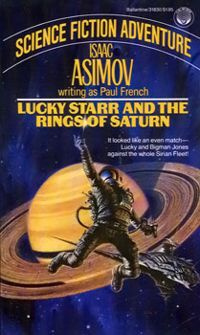Hulse Michael - The Rings of Saturn
Here you can read online Hulse Michael - The Rings of Saturn full text of the book (entire story) in english for free. Download pdf and epub, get meaning, cover and reviews about this ebook. City: England, year: 1999;2014, publisher: New Directions, genre: Detective and thriller. Description of the work, (preface) as well as reviews are available. Best literature library LitArk.com created for fans of good reading and offers a wide selection of genres:
Romance novel
Science fiction
Adventure
Detective
Science
History
Home and family
Prose
Art
Politics
Computer
Non-fiction
Religion
Business
Children
Humor
Choose a favorite category and find really read worthwhile books. Enjoy immersion in the world of imagination, feel the emotions of the characters or learn something new for yourself, make an fascinating discovery.
- Book:The Rings of Saturn
- Author:
- Publisher:New Directions
- Genre:
- Year:1999;2014
- City:England
- Rating:3 / 5
- Favourites:Add to favourites
- Your mark:
- 60
- 1
- 2
- 3
- 4
- 5
The Rings of Saturn: summary, description and annotation
We offer to read an annotation, description, summary or preface (depends on what the author of the book "The Rings of Saturn" wrote himself). If you haven't found the necessary information about the book — write in the comments, we will try to find it.
The Rings of Saturn — read online for free the complete book (whole text) full work
Below is the text of the book, divided by pages. System saving the place of the last page read, allows you to conveniently read the book "The Rings of Saturn" online for free, without having to search again every time where you left off. Put a bookmark, and you can go to the page where you finished reading at any time.
Font size:
Interval:
Bookmark:

By W. G. Sebald
Available from New Directions
T HE E MIGRANTS
T HE R INGS OF S ATURN
U NRECOUNTED
V ERTIGO
W. G. S e b a l d
T h e R i n g s o f S a t u r n
Translated by
MICHAEL HULSE
A NEW DIRECTIONS BOOK
Copyright Vito von Eichborn GmbH & Co Verlag KG, Frankfurt am Main, 1995
English translation copyright 1998 The Harvill Press
Originally published as Die Ringe des Saturn, Eine englische Wallfahrt , by Vito von Eichborn GmbH & Co Verlag KG, Frankfurt am Main, 1995
Published by arrangement with Eichborn Verlag, Frankfurt, and The Harvill Press, London
All rights reserved. Except for brief passages quoted in a newspaper, magazine, radio, or television review, no part of this book may be reproduced in any form or by any means, electronic or mechanical, including photocopying and recording, or by any information storage and retrieval system, without permission in writing from the Publisher.
Manufactured in the United States of America
First published clothbound in 1998
First published as New Directions Paperbook 881 in 1999
Published simultaneously in Canada by Penguin Books Canada Limited
Library of Congress Cataloging-in-Publication Data
Sebald, Winfried Georg, 1944
[Ringe des Saturn. English]
The rings of Saturn : an English pilgrimage / W.G. Sebald;
translated by Michael Hulse.
p. cm.
ISBN 978-0-811-22130-6 (e-book)
1. Sebald, Winfried Georg, 1944 - Journeys England.
2. Authors, German20th centuryBiography. 3. EnglandDescription and travel. I. Hulse, Michael, 1955- . II. Title.
PT2681.E18R56 1998
833.914dc2197-47578
TWELFTH PRINTING CIP
New Directions Books are published for James Laughlin
by New Directions Publishing Corporation,
80 Eighth Avenue, New York 10011
Il faut surtout pardonner ces mes malheureuses qui ont lu de faire le plerinage pied, qui ctoient le rivage et regardent sans comprendre lhorreur de la lutte, la joie de vaincre ni le profond dsespoir des vaincus.
JOSEPH CONRAD,
letter to Marguerite Poradowska,
23rd25th March 1890
The rings of Saturn consist of ice crystals and probably meteorite particles describing circular orbits around the planets equator. In all likelihood these are fragments of a former moon that was too close to the planet and was destroyed by its tidal effect ( Roche limit).
Brockhaus Encyclopaedia
CONTENTS
| In hospital Obituary Odyssey of Thomas Brownes skull Anatomy lecture Levitation Quincunx Fabled creatures Urn burial |
| The diesel train Morton Petos palace Visiting Somerleyton The cities of Germany in flames The decline of Lowestoft The former coastal resort Frederick Farrar and the court of King James II |
| Fishermen on the beach The natural history of the herring George Wyndham Le Strange A great herd of swine The reduplication of man Orbis Tertius |
| The Battle of Sole Bay Nightfall Station Road in The Hague Mauritshuis Scheveningen The tomb of St Sebolt Schiphol airport The invisibility of man The Sailors Reading Room Pictures from the Great War The concentration camp at Jasenovac on the Sava |
| Conrad and Casement The Boy Teodor Exile in Volgda Nowofastw Death and interment of Apollo Korzensiowski Sea- and love-life A winter journey The heart of darkness The panorama of Waterloo Casement, the slave economy and the Irish question Casement tried and executed for treason |
| The bridge over the Blyth The Chinese court train The Taiping rebellion and the opening of China Destruction of the garden of Yuan Ming Yuan The end of Emperor Hsien-feng The Dowager Empress Tzu-hsi Mysteries of power The town beneath the sea Poor Algernon |
| Dunwich heath Marsh Acres, Middleton A Berlin childhood Exile in England Dreams, elective affinities, correspondences Two strange stories Through the rainforest |
| A conversation about sugar Boulge Park The FitzGeralds The Bredfield nursery Edward FitzGeralds literary ventures A Magic Shadow-Show Loss of a friend Years end Last journey, summer landscape, tears of happiness A game of dominoes An Irish memory On the history of the civil war Arson, impoverishment and decline Catherine of Siena The entrepreneurial spirit and the cult of the pheasant Through the desert Secret weapons of destruction In another country |
| The Temple of Jerusalem Charlotte Ives and the Vicomte de Chateaubriand Memoirs from beyond the grave In Ditchingham churchyard Ditchingham Park The hurricane of 16th October, 1987 |
| Thomas Brownes Musum Clausum The silkworm moth, Bombyx mori Origins and spread of sericulture The Norwich silk-weavers The melancholy of the weavers Pattern books: nature and art Sericulture in Germany The extermination business Mourning silk |
I
I n August 1992, when the dog days were drawing to an end, I set off to walk the county of Suffolk, in the hope of dispelling the emptiness that takes hold of me whenever I have completed a long stint of work. And in fact my hope was realized, up to a point; for I have seldom felt so carefree as I did then, walking for hours in the day through the thinly populated countryside, which stretches inland from the coast. I wonder now, however, whether there might be something in the old superstition that certain ailments of the spirit and of the body are particularly likely to beset us under the sign of the Dog Star. At all events, in retrospect I became preoccupied not only with the unaccustomed sense of freedom but also with the paralysing horror that had come over me at various times when confronted with the traces of destruction, reaching far back into the past, that were evident even in that remote place. Perhaps it was because of this that, a year to the day after I began my tour, I was taken into hospital in Norwich in a state of almost total immobility. It was then that I began in my thoughts to write these pages. I can remember precisely how, upon being admitted to that room on the eighth floor, I became overwhelmed by the feeling that the Suffolk expanses I had walked the previous summer had now shrunk once and for all to a single, blind, insensate spot. Indeed, all that could be seen of the world from my bed was the colourless patch of sky framed in the window.
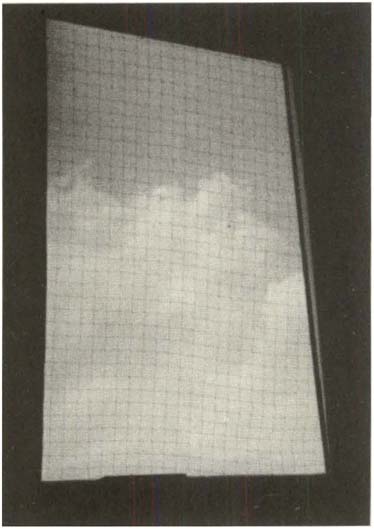
Several times during the day I felt a desire to assure myself of a reality I feared had vanished forever by looking out of that hospital window, which, for some strange reason, was draped with black netting, and as dusk fell the wish became so strong that, contriving to slip over the edge of the bed to the floor, half on my belly and half sideways, and then to reach the wall on all fours, I dragged myself, despite the pain, up to the window sill. In the tortured posture of a creature that has raised itself erect for the first time I stood leaning against the glass. I could not help thinking of the scene in which poor Gregor Samsa, his little legs trembling, climbs the armchair and looks out of his room, no longer remembering (so Kafkas narrative goes) the sense of liberation that gazing out of the window had formerly given him. And just as Gregors dimmed eyes failed to recognize the quiet street where he and his family had lived for years, taking Charlottenstrae for a grey wasteland, so I too found the familiar city, extending from the hospital courtyards to the far horizon, an utterly alien place. I could not believe that anything might still be alive in that maze of buildings down there; rather, it was as if I were looking down from a cliff upon a sea of stone or a field of rubble, from which the tenebrous masses of multi-storey carparks rose up like immense boulders. At that twilit hour there were no passers-by to be seen in the immediate vicinity, but for a nurse crossing the cheerless gardens outside the hospital entrance on the way to her night shift. An ambulance with its light flashing was negotiating a number of turns on its way from the city centre to Casualty. I could not hear its siren; at that height I was cocooned in an almost complete and, as it were, artificial silence. All I could hear was the wind sweeping in from the country and buffering the window; and in between, when the sound subsided, there was the never entirely ceasing murmur in my own ears.
Next pageFont size:
Interval:
Bookmark:
Similar books «The Rings of Saturn»
Look at similar books to The Rings of Saturn. We have selected literature similar in name and meaning in the hope of providing readers with more options to find new, interesting, not yet read works.
Discussion, reviews of the book The Rings of Saturn and just readers' own opinions. Leave your comments, write what you think about the work, its meaning or the main characters. Specify what exactly you liked and what you didn't like, and why you think so.

